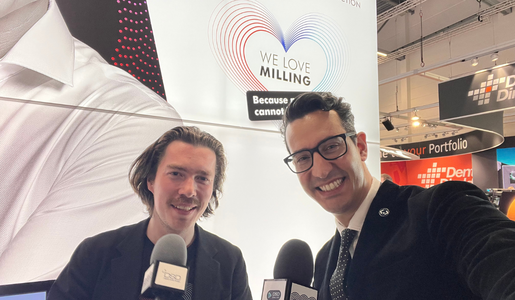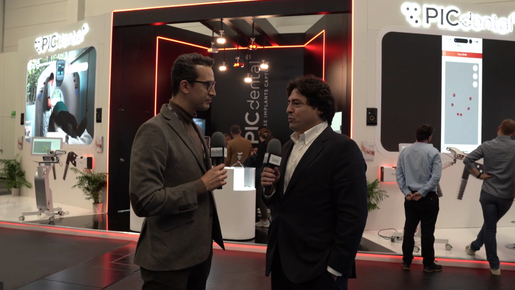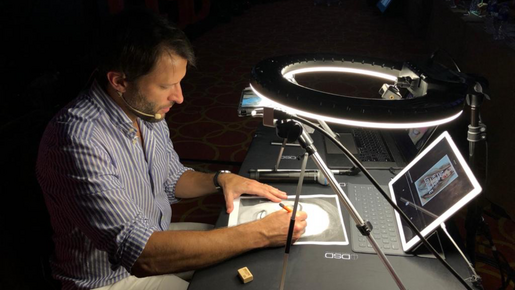
By Luken De Arbeloa
⋅ 3 min read
⋅ Updated Sept, 2025
At this year’s IDS exhibition, one big question kept coming up: With dental hardware like scanners, printers, and milling machines already performing at such an ultra-high level, what’s left to improve?
So when I had the chance to talk with Julian Russ, CDT / Technical Sales Consultant from VHF, a brand known for the milling machines we use every day in the DSD Planning Center and showcase in our courses, I asked him directly:
"What else can you bring to the market now?"
And his answer showed that the next big leap in digital dentistry workflows isn’t about bigger or faster hardware, but about rethinking the experience of using it. And that means software.
Here are three ways VHF is transforming dental milling software and bringing new possibilities to CAD/CAM in dentistry.

1. Dental lab connectivity and remote monitoring with my VHF
VHF’s new online universe, my VHF, brings everything about the VHF experience into one place. With a single sign-on, you get a dashboard view of your entire ‘machine park’, accessible from anywhere in the world through a progressive web app.
You can check what your milling machines are doing in real time, even when you’re not at the office. Finished jobs trigger push notifications straight to your phone, so your mill can literally tell you when it’s done.
My VHF goes beyond live monitoring; it offers analytics and statistics so you can track job trends over time, see your most-used materials – zirconia, PMMA, glass ceramics – review job success rates and check overall runtimes.
It also streamlines dental lab connectivity: you can manage accessories in the cloud and get instant access to the VHF Academy, which houses tutorials, manuals and the option to book custom online training.
2. Simplifying in-clinic milling workflows with DentalCAM 9
VHF has completely redesigned its software for the release of DentalCAM 9. The goal? Make the in-clinic milling workflow so simple and intuitive that you don’t need to be a seasoned technician to use it.
The process now comes down to four straightforward steps:
Choose your objects
Select your blank (with recommendations based on metadata)
Auto-position and auto-pin
Send to the machine
The software can read material, tooth color and size information directly from the file to suggest the perfect blank, filtering your archive automatically.
The new drag-and-drop interface works like a smartphone: just pick a job and drop it onto the machine you want to use. You can control multiple milling machines from one software and use the ‘optimize’ function to reorder jobs and save milling time.
3. Increasing milling efficiency and predictability with smart automation
DentalCAM 9 isn’t just easier, it’s faster and smarter. Automatic nesting, pinning and job organization take repetitive tasks off your plate. New optimized strategies mean milling glass ceramics is now 20% quicker.
The goal is clear: more milling machine efficiency, more predictability and better outcomes.
The bigger picture: trends shaping dental milling technology
Thanks to VHF connecting your machines and DentalCAM 9 streamlining how you can work with them, VHF is taking its solutions to the next level. These updates are designed to give more control, save time and make digital dentistry workflows more predictable so you can focus on delivering the best results for your patients.
This shift is part of a wider movement in dental practice technology trends toward connectivity, personalization, the Internet of Things and AI in dentistry. For dental labs, that means easier collaboration, smarter file management, and a more seamless experience from start to finish.
If you’re exploring ways to bring the latest technology solutions in dentistry into your practice, our team can help. Book a discovery call for advice personalized to your clinic and workflows.
Follow us on Instagram, Facebook, and LinkedIn to stay updated.



